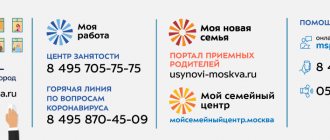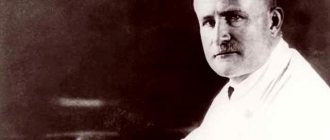Erased dysarthria
A child with mild dysarthric status has impaired motor sphere, sound pronunciation, and prosodic aspect of speech. However, all these defects are minimally expressed, in an erased form, and therefore are detected only with a careful neurological and speech therapy examination. Typically, erased dysarthria is diagnosed at 5-6 years of age. Before this, speech disorders were regarded as polymorphic dyslalia, and only the extraordinary persistence of sound pronunciation defects forces specialists to take a deeper look at the problem.
In general physical development in children with MDD there is a slight lag behind the age norm. Patients may be short, underweight, or have a narrow chest. They are clumsy, quickly tire during physical activity, and have difficulty performing movements in a synchronized manner. Along with the general motor sphere, fine motor skills suffer. Due to the fact that differentiated movements of the fingers are disrupted, children have difficulty mastering self-care skills (fastening buttons, tying shoelaces), feel awkward during creative work (drawing, appliqué, modeling), and do not like toys with small parts (puzzles, construction sets). Schoolchildren's graphomotor skills suffer: illegible handwriting and low writing speed.
Damage to the facial and articulatory muscles is indicated by hypomimicness of the face, laxity of the lips, pareticity of the tongue, asymmetry of the nasolabial folds and corners of the mouth. When performing articulation tests, hyperkinesis, synkinesis, slight cyanosis and deviation of the tongue appear. During speech activity, hypersalivation is noted. It is difficult to perform articulatory movements, hold a pose, and smoothly switch from one articulation to another. The neuropsychic status of children with erased dysarthria reveals vegetative disorders (sweating and cyanosis of the extremities, persistent dermographism). The child may be easily excitable, fussy or inhibited, lacking initiative. Characterized by reduced performance, poor switching ability, instability of attention, and decreased memory capacity.
Violation of sound pronunciation is multiple in nature - phonetic defects affect two or more groups of sounds (usually whistling, hissing and sonorant). Abnormal pronunciation in most cases is represented by sound distortions (interdental and lateral sigmatism, throat rhotacism), often combined with the absence and replacement of sounds, defects in voicing/voicing and softening. Even having achieved the normative isolated sound of a phoneme, it is difficult to automate the disrupted sound and introduce it into speech. Along with sound pronunciation, the prosodic aspect is disrupted: the voice is fading, intermittent, unmodulated, nasalized, and the intonation expressiveness of speech is reduced. In general, the child’s speech is “smeared” and poorly intelligible.
Prognosis and prevention
Any speech defect, including an erased form of dysarthria in preschool children, entails psychological disorders. If the disorder is not detected in time, diagnosed and therapy is not started, the baby will grow up with this pathology, and others will join it. In such situations, it is difficult for a person to live in society: he is limited in his choice of profession and self-realization. Because of this, he may feel depressed, which can further lead to depression.
Prevention of erased dysarthria begins during pregnancy planning. The expectant mother needs to undergo examination at this stage and prepare for conception: undergo a course of treatment, if there are any problems, eliminate deficiency conditions (anemia, hypovitaminosis).
After pregnancy, you need to be careful about your food choices and daily routine. The expectant mother should have enough rest, walk, avoid physical strain, injury, and stress.
It is important to competently manage labor and avoid injuries and hypoxia. During the newborn period, follow the doctor’s recommendations and undergo examinations on time. If you suspect any developmental abnormality, tell your doctor. Timely diagnosis and therapy are mandatory conditions for the earliest possible recovery and a guarantee that the disorder will not affect the baby’s development in the future.
Causes
The causes of dysarthria are directly related to diseases that affect the posterior parts of the frontal zone and other parts of the brain. Speech reproduction is impaired due to difficulty moving the tongue and lips. In childhood, in almost all cases, written speech, perception of sounds and reading abilities change.
In adults, such phenomena are observed much less frequently. Dysarthria often occurs during intrauterine development. The factors that caused the disease are gestosis (late toxicosis), oxygen starvation of the fetus, chronic diseases of the mother, injuries received during childbirth, prematurity, suffocation at birth, cerebral palsy (cerebral palsy).
At an early age, the disease is diagnosed due to previous purulent otitis media, meningitis, severe poisoning, hydrocephalus, increased intracranial pressure, as well as traumatic brain injuries. In adults, dysarthria results from:
- Tumors of the brain or cerebellum;
- Cerebrovascular accidents;
- Demyelinating disease (brain disease);
- Having suffered a stroke;
- Syphilitic lesions of the spinal cord or brain;
- Traumatic brain injuries;
- Abscess (purulent inflammation) of the cerebellum;
- Severe poisoning with poisons;
- Parkinson's disease (shaking palsy);
- Multiple sclerosis;
- Severe infectious pathologies;
- Hemorrhages in the brain;
- Serious disorders of the nervous system;
- Autoimmune neuromuscular disease;
- Cerebrovascular diseases;
- Fazio-Londe syndrome (juvenile paralysis);
- Mental retardation (oligophrenia).
In adults and older people, the disease most often occurs suddenly due to a prolonged period of unconsciousness (coma after a traumatic brain injury or major stroke). Dysarthria is often caused by improperly performed brain surgery and botulism (a disease associated with poisoning).
Pathology can also appear due to excessive consumption of alcoholic beverages, improper use of certain groups of medications, and drug overdose. High-risk groups include children under 2 years of age, adolescents and the elderly. At a young age, pathology is diagnosed, but not so often.
The disease is acquired in nature; as a rule, it does not have a genetic predisposition. Only pathologies of brain development that contribute to the occurrence of dysarthria can be inherited.
Diagnostics
A thorough examination and further therapy is carried out by a neurologist and speech therapist. In some cases, consultations with other highly specialized specialists may be required. At the initial stage, the doctor collects complete information - when the first symptoms appeared, whether there are any chronic diseases, whether family members have similar complaints.
After collecting anamnesis, the neurologist conducts a visual examination of the pharynx, checking the mandibular and pharyngeal reflex. The role of the speech therapist at the diagnostic stage is to assess speech abilities (pronunciation of sounds, changes in timbre during a conversation, disturbances in the tempo of speech).
If the patient’s voice is nasal, then to exclude dangerous pathologies in the nasal cavity, an examination by an otolaryngologist is prescribed. After a thorough visual examination, a number of diagnostic measures are prescribed:
- Electromyography (ENMG) is a diagnostic method that tests muscle activity, the functionality of the nerve innervating the damaged muscle, the affected area, and the severity of damage to the nerves and muscles.
- Transcranial magnetic stimulation (TMS) is a technique based on the activation of brain cells. The examination is carried out using a special apparatus with an alternating magnetic wave. The procedure helps determine the excitability of cortical neurons, the functionality of the cortex, and the interaction of certain parts of the brain with each other. Based on the results obtained, the doctor draws conclusions about the functioning of the speech centers, as well as the visual apparatus, cognitive functions (perception of information), and other things.
- Computed tomography (CT) is a study that allows you to examine in detail the internal organs, bone tissue and vascular system in different projections. The procedure takes only 10-15 minutes for each organ examined, after which the doctor receives a layer-by-layer X-ray image, which is used to make a diagnosis.
- Electroencephalography (EEG) is a study of the vital activity of the brain by recording impulses that come from its individual areas. The technique allows us to identify pathological processes occurring in the brain, as well as assess the nature and severity of the disorder.
- Magnetic resonance imaging (MRI) of the brain is a scan of organs using magnetic waves to produce high-quality images. Diagnostics is designed primarily to identify brain abnormalities and a thorough examination of the vascular system. In addition, MRI is used to check intervertebral discs, bile ducts and other human organs.
Diagnostics is the most important stage, allowing you to make a reliable diagnosis and make the right prescription. If the type of pathology and its severity are incorrectly determined, it is impossible to make a correct prescription. This threatens that the prescribed medications will not bring the desired result, and the disease will progress.
To diagnose pathology, you can go to the Yusupov Hospital at any time of the day, where certified specialists will conduct a detailed examination of organs using the latest equipment. Thanks to the latest generation of safe devices, doctors can accurately determine the type of pathological process without harm to the patient’s health. This will allow you to select an individual course of treatment and eliminate the dangerous disease in a short time.
Treatment
Treatment requires an integrated approach, since monotherapy (taking one medication) will not give anything. The main goals of therapeutic measures are speech correction, normalization of speech breathing and elimination of voice disorders. For these purposes, medications, physical therapy (physical therapy), and speech therapy sessions are prescribed.
Drug therapy
Medicines are selected by the doctor depending on the type of pathology. The following pharmacological groups are most often prescribed:
- Nootropics are drugs designed to increase mental abilities and improve memory. Such drugs include Encephabol, Pantocalcin, Picamilon;
- Sedatives (calming) are medications that relieve nervous tension and have an anti-anxiety effect. The most popular are “Persen” and “Novo-passit”;
- Calcium channel blockers - normalize cerebral circulation, the functioning of the vascular system, and reduce the risk of developing oxygen starvation of brain cells. Cinnarizine, Gliatilin and Instenon are considered effective drugs;
- Metabolics - correction of respiratory functions, improvement of metabolism, normalization of cerebral circulation. They are used for various traumatic brain injuries, hypoxia and other pathological conditions. The most commonly prescribed drugs are Cerebrolysate or Actovegin.
Any prescription is made by a doctor after diagnostics and an accurate diagnosis. Self-medication is unacceptable and leads to aggravating consequences.
Classes with a speech therapist
Speech therapy procedures have a beneficial effect on the muscles of the articulatory organs and develop fine motor skills. Individual techniques are developed by a speech therapist depending on the pathological condition. The set of exercises usually includes:
- Articulation and finger gymnastics;
- Exercises to develop voice (orthophony);
- Breathing exercises;
- Correction of speech expressiveness;
- Treatment and correction of written speech disorders;
- Restoring reading abilities.
Physiotherapy
One of the important techniques for dysarthria of any degree. Exercises are performed at home on an ongoing basis. This can be body turns, forward bends, etc. When performing any complex exercise, it is important to breathe correctly. Take a deep breath through your mouth and exhale slowly through your nose. Gymnastics helps normalize metabolic functions, strengthen the body and improve cerebral circulation.
Massage
Speech therapy massage for dysarthria should be done carefully so as not to cause pain to the patient. An individual set of measures is developed by a speech therapist. To improve articulation abilities, experts recommend several massage exercise techniques:
| Massaging area | Methodology |
| Language | Each exercise is performed at least 5-7 times. First you need to stroke your tongue with your index finger. The movement is spiral. In this case, you need to press lightly, without abusing the force of pressure. The second set of exercises is moderate pinching and stroking. Produced from the tip of the tongue to its middle. |
| Lips | The massage is done with two fingers. Movements are spiral and wave-like. First, the upper lip is gently massaged, then the lower lip and the corners of the lips. The final stage is stroking, light pinching and patting. |
| Sky | First, strokes are made with the tongue in the direction from the fangs to the middle of the palate. Then pats are made in the same direction. Completion: stroking the palate with the tongue in wave-like movements. |
During the rehabilitation period, physiotherapy, acupuncture, medicinal baths, and hirudotherapy (leech treatment) are prescribed. An important role in the treatment of dysarthria is played by dolphin therapy, art therapy (clay modeling, drawing therapy, etc.), and sensory therapy. The effectiveness of treatment depends on the correctness of the selected individual therapeutic program.
The specialists at the Yusupov Hospital have the highest medical categories, many years of experience in successfully eliminating pathology, and use only modern equipment. Thanks to this, each patient is provided with qualified assistance and the most effective individual method for treating dysarthria is selected.
Make an appointment
Classification
Neurologists and speech therapists are still actively discussing a generally accepted classification of dysarthria, but consensus has not yet been reached. The classification of dysarthria, which is based on the localization of the pathological focus, includes the following types:
- Bulbar dysarthria - associated with the involvement in the pathological process of the nuclei of the cranial nerves, which are localized in the medulla oblongata;
- Pseudobulbar dysarthria - in which the pathology concerns the pathways connecting the motor centers of the cortex with the nuclei of the bulbar nerves;
- Subcortical dysarthria - in which the subcortical nuclei of the brain are affected;
- Cerebellar dysarthria – pathology of the cerebellum and its pathways;
- Cortical dysarthria is a focal pathology of the cerebral cortex itself.
The classification of dysarthria according to the degree of severity divides it into erased, mild, moderate and severe dysarthria.
The Yusupov Hospital has been successfully treating patients with this type of pathology for many years. Doctors achieve tremendous results not only with erased dysarthria, but also with severe disease. Make an appointment
Features of moderate dysarthria
The average severity of dysarthria is already characterized by gross defects in pronunciation, facial expressions, chewing and swallowing.
Speech with this degree of dysarthria becomes inarticulate, blurred, and incomprehensible. Children with moderate dysarthria are educated in specialized schools. After a certain time, relatives get used to it and begin to understand the patient’s speech. Facial expressions with a moderate degree of dysarthria are poor. In most cases, drooling is observed. Eating is difficult due to defects in chewing and swallowing.










